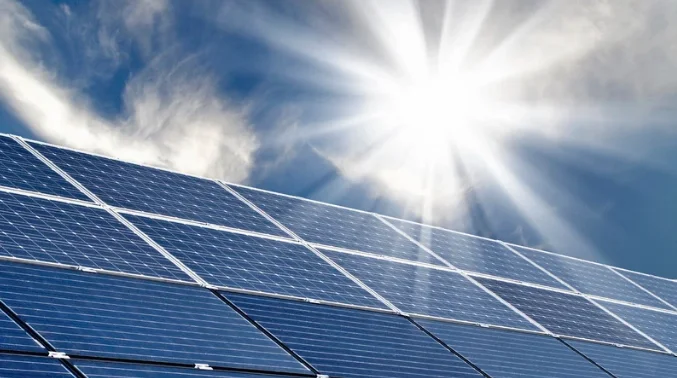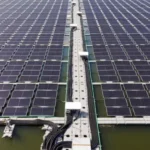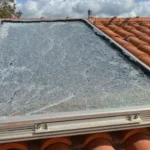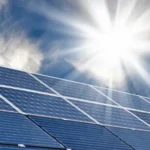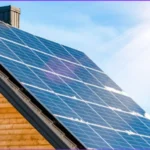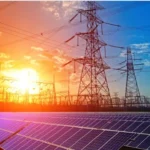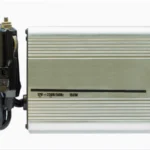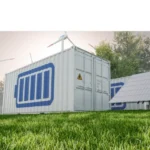Imagine this: you invested thousands into a state-of-the-art rooftop solar system. The panels gleam in the sun, you check your app, and… the output isn’t what you expected. What gives?You’re not alone.Across the Solar World, homeowners and small business owners are finding that while solar energy is a powerful investment, real-world factors like grime on panels or aging inverters can quietly reduce efficiency and savings.
But the good news? Most issues are preventable or fixable with the right knowledge.In this comprehensive guide, we’ll break down how and why solar systems underperform, what to do about it, and how to keep your setup running at peak power, backed by real-world experience and trusted industry sources.
Also click here : Energy storage solution.

Understanding the Solar World: Why Output Isn’t Always Optimal
Solar panels are designed to be low-maintenance, but that doesn’t mean maintenance-free. From my experience consulting with homeowners in Southern California, even slight neglect like forgetting to clean your panels can cost you up to 20% in energy production.Let’s break down the most common performance problems.
Top Causes of Solar System Underperformance
1. Panel Soiling and Dirt Accumulation
It may not seem like a big deal, but dust, bird droppings, pollen, and even salt residue near coastal areas can block sunlight and reduce efficiency. According to the National Renewable Energy Laboratory (NREL), dirty panels can lose 2 to 20 percent of their energy output depending on the environment.
Real-World Tip:
A client in Arizona noticed a sudden drop in system performance mid-summer. Turned out, a dusty monsoon left a film of dirt over all 18 of their 400W panels. After a professional rinse, they saw a 14 percent bump in daily output.
What You Can Do:
- Rinse panels with a hose in the early morning or late evening
- Avoid harsh chemicals or pressure washers
- Consider professional cleaning 2 to 4 times per year, especially in dry or high-pollen regions
2. Inverter Failures or Configuration Issues
The inverter is your system’s brain. It converts the DC electricity from your panels into usable AC power. A malfunctioning inverter can lead to partial or complete power loss.
Expert Insight:
String inverters often fail silently. You may still see sunlight on your roof but no production on your app. Always check the inverter display or monitoring system monthly.
Troubleshooting Checklist:
- Is the inverter display lit and showing production?
- Any error codes? (Check the manual or manufacturer website)
- Reset the inverter safely if advised
- If uncertain, call a licensed solar technician
Also visit here : PV system.
3. Shading from Trees or New Structures
Even partial shading on one panel in a string can reduce output for the whole group unless you have optimizers or micro inverters installed.
Pro Tip:
Shading isn’t just about trees. Neighboring buildings, roof obstructions, or even your own chimney could cause output loss, especially in winter when the sun is lower.
Solution:
- Schedule a shading analysis if output dips seasonally
- Trim trees annually
- Use tools like PVWatts (from NREL) to model performance changes
4. Degradation Over Time
All solar panels degrade gradually. Most lose about 0.5 to 1 percent efficiency per year, depending on the brand and climate.
This is normal, but panels under warranty should stay above 80 percent efficiency after 25 years. If you see drastic drops sooner, something else may be wrong.

Solar Batteries and Smart Inverters: Performance Tips
If your setup includes energy storage or smart inverters, which are increasingly common in the modern Solar World, there are a few unique things to consider.
Battery Care
Lithium-ion solar batteries like the Tesla Powerwall or Enphase IQ Battery require minimal upkeep, but:
- Keep them within recommended temperature ranges (ideally 32°F to 86°F)
- Avoid frequent full discharges if your system allows partial cycling
- Ensure firmware is up to date (most update automatically)
Client Story:
A small business owner I worked with in Colorado Springs saw poor battery performance in winter. The issue was their Powerwall was installed in an uninsulated garage where temperatures dropped below freezing. Moving it indoors resolved the issue.
Smart Inverter Maintenance
Today’s hybrid and smart inverters often support grid interaction, real-time monitoring, and time-of-use optimization.
To maintain performance:
- Check software versions quarterly
- Review logs for faults or unusual voltage patterns
- Clean inverter vents to prevent overheating
Using Solar to Charge Your EV? Here’s What You Need to Know
Charging your EV with solar energy is one of the best ways to cut fuel costs and lower your carbon footprint, but only if your setup is optimized.
Choosing the Right Solar EV Charger
Look for:
- Level 2 charger (240V) for fast charging
- Solar-integrated systems like SolarEdge Home EV or Wallbox Pulsar Plus
- Smart scheduling to charge during peak sun hours
Efficiency Tip:
EVs typically use 6 to 10 kWh per day, which equals the daily output of about 4 to 6 solar panels. If your car is draining your battery bank or home supply, you might need to scale up.
Off-Grid? Even More Reason to Stay On Top of Performance
Living off-grid offers freedom, but it also means you’re your own utility.
Stay on top of:
- Battery state of charge (SOC) daily
- Solar array cleanliness
- Backup generator readiness
Important: Never let lithium batteries fall below 20 percent SOC regularly. It shortens their lifespan.
How to Tell if Your Solar System Is Underperforming
Many homeowners assume their system is working fine because the lights are still on. But unless you’re actively tracking output, you might be losing energy and money.
Signs of Underperformance
- Monthly kWh is lower than the same month last year
- Monitoring app shows sudden dips or flat lines
- Inverter shows errors or a blank screen
- Higher-than-expected utility bills

What to Do If You Suspect a Problem
Step-by-Step Guide:
- Check Your Monitoring App
Compare current output to previous months or years
- Inspect the Panels Visually
Look for dirt, shade, cracks, or bird nests
- Check the Inverter
Look for warning lights or codes
- Call a Pro
Get a licensed installer or maintenance provider to run a system health check
Is Solar Still Worth It?
Absolutely, but only when maintained. Like any high-performance system, solar needs occasional tune-ups to deliver consistent value.
According to Energy.gov, a well-maintained solar system can last 25 to 30 years and deliver savings up to $30,000 or more over its lifetime, depending on location and usage.
Conclusion: Your Solar World Deserves Attention
Your solar world system isn’t just a set-it-and-forget-it investment. It’s a dynamic energy ecosystem that thrives with a bit of care.
Whether you’re charging an EV, living off-grid, or simply trying to lower your bills, keeping your panels clean, your inverters updated, and your system checked means you’ll get the most out of your setup.
And if you’re part of the growing Solar World, maintaining performance isn’t just smart. It’s essential.
Ready to Maximize Your Solar Investment?
If your panels haven’t been cleaned in over 3 months, you could be losing 10 to 20 percent of your energy output. Book a system checkup today and start getting the full value from your solar setup.

